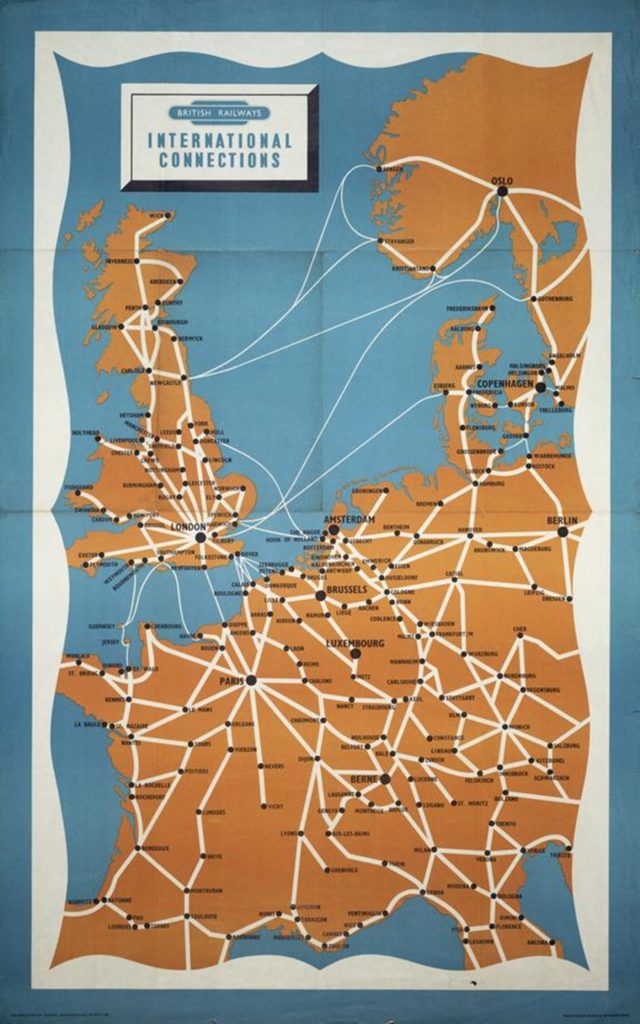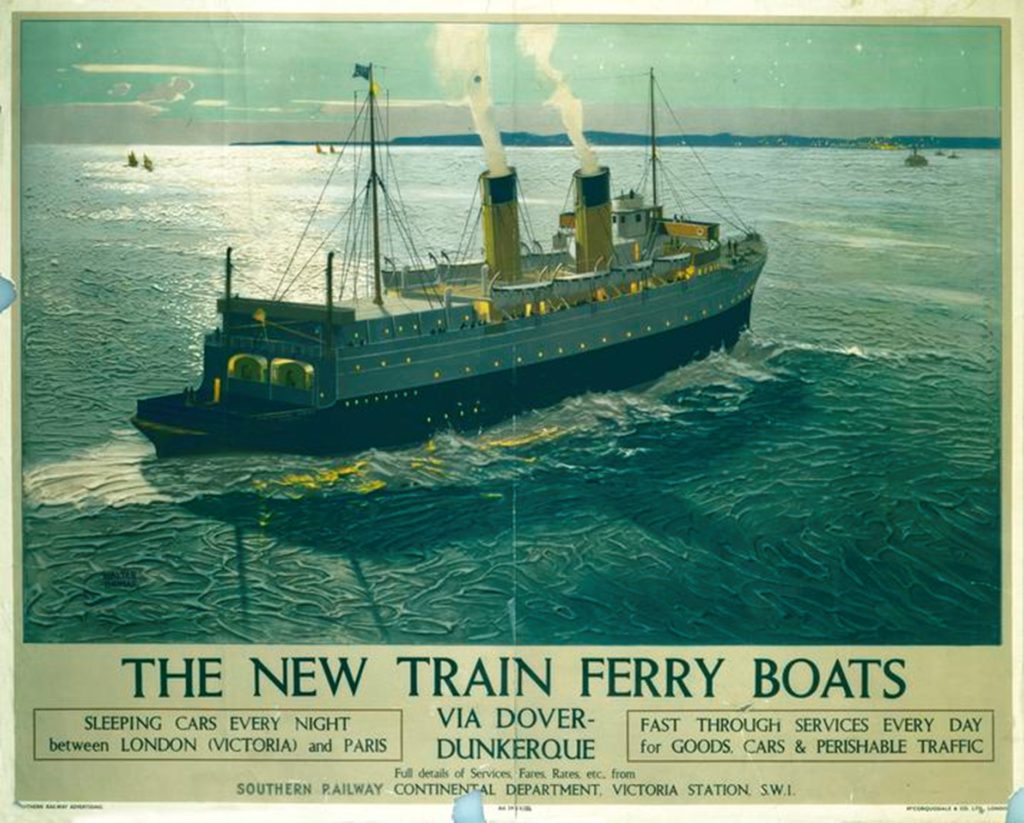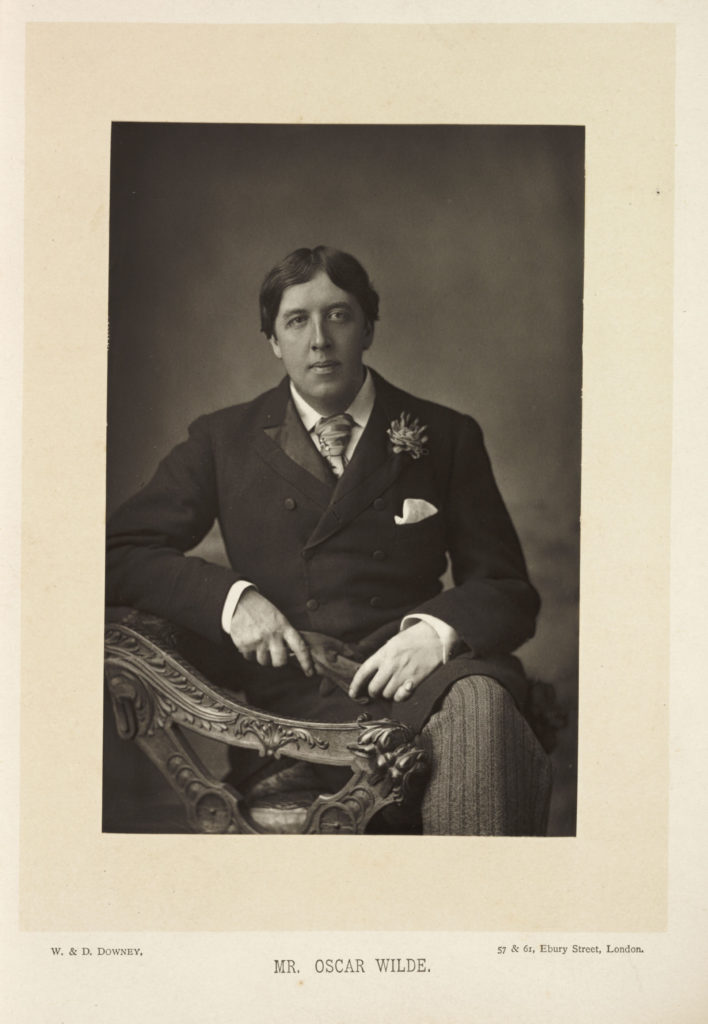Told often as a history of technologies and engineering, the story of our railways is a deeply human story. Every development has been human-led, driven by human needs and desires, and the effects of every development have been wide-reaching in shaping the lives and experiences of people across all walks of life and society. Built to serve society, the railways in turn became one of the key influences shaping societies and their communities.
The history of the queer community is, like so many others, one that is heavily entwined with the story of our railways. Earlier this year I began researching this relationship and establishing partnerships to help us delve deeper into this history. As a large inter-sectional community, not only were queer individuals involved in establishing and building the industry at all levels, but the railways played many fundamental roles in queer lives.
Travel Revolution and the Queer Community
One of the most profound effects of the arrival of rail was in the incredible opportunities it afforded through movement and travel, which had a huge impact on the queer community.
Same-sex activity between men was legally punishable in Britain until the beginning of the 21st century, only first becoming partially decriminalised in 1967, and not fully and universally becoming decriminalised until 2013. Through the 19th and early 20th centuries however, both laws and social attitudes were far more reasonable in many neighbouring places on the continent, including France, the Netherlands and even Berlin. Once the railways had established firm connections to these places by the late 19th century, these locations became hotspots for Britain’s queer community.

https://collection.sciencemuseumgroup.org.uk/objects/co480015/internal-connections-poster

https://collection.sciencemuseumgroup.org.uk/objects/co230916/the-new-train-ferry-boats-via-dover-dunkerque-poster
In late Victorian Britain, many well-recorded queer individuals took advantage of this fact to visit, and even relocate to these places. Oscar Wilde, one of the most prominent figures in Victorian society, and still well-loved today, utilised the easy travel railways brought to visit Paris regularly through the 1880s and early 1890s for this reason, including writing Salome there in 1891. Following his trial and subsequent imprisonment for his sexuality in Britain, Wilde also relocated permanently to France following his release.
In the late 19th and early 20th centuries, many women involved in same-sex relationships left London for Paris, where they were able to express themselves more openly. While same-sex activity between women had not been against the law in Britain, despite moves to make it so in 1921—failing out of fear that it would alert more women to the possibility of same-sex love—women’s experience in London was of silence, as epitomised by the rationale for not passing legislation against them, and by the banning of lesbian literature such as The Well of Loneliness by Radclyffe Hall published in 1928.
Many queer individuals also took advantage of this ease of travel to relocate to London specifically for the thriving community and subculture that was developing. Others like Edward Carpenter—the renowned 19th century writer and activist for gay rights, animal rights, prison reform, and socialism—also chose the opposite option, moving away from London to take advantage of the greater disparity of culture and social views that existed across England at that time. Carpenter, who met his lifelong partner George Merrill on a train, lived openly with his partner first in Millthorpe, and later Guildford, where he was celebrated by his community both while alive and after his passing.


https://historicengland.org.uk/research/inclusive-heritage/lgbtq-heritage-project/homes-and-domestic-spaces/millthorpe-and-edward-carpenter/
Railway Spaces
Beyond travel, railways also created and redefined many of the spaces in society. These spaces, both public and semiprivate, were places where people from all walks of life and society could momentarily come together without suspicion. They were places where both queer and non-queer individuals could find fellowship, romance, and of course, sexual dalliance. Such spaces included stations and their surroundings, including the nearby shopping centres, markets, cinemas, theatres, and bars that sprung up around them due to the accessibility for people and goods railways created.
Both historically, and even today, the cloisters of queer venues and ‘gay bars’ centre around their nearest railway termini. The below lists show the correlations between a smattering of these areas and their nearest stations:
0-400 metres:
- Manchester
- Leeds
- Liverpool
- Middlesborough
- Newcastle
- Norwich
- Glasgow
- Aberdeen
- Coatbridge
- Swansea
- Leicester
- London
Under 1,000 metres:
- Sheffield
- Birmingham
- Coventry
- Lincoln
- Nottingham
- Edinburgh
- Dundee

Railways created many spaces which, while targeted by hostile police forces in some locations, also presented a relative degree of safety and opportunity to come together for queer individuals. Such spaces included railway hotels, which offered rooms available at short notice and for short durations meant to allow people to break up or wait for journeys. Many such hotels were places where people wouldn’t bat an eye at a same-sex group temporarily taking a room.

Before the introduction of corridored rolling stock through the late 19th and early 20th centuries, compartment carriages were another space offering privacy. Only accessible at stations, these were private spaces between. Well known for the privacy they permitted both within the queer and non-queer communities—they allowed people, albeit brief, breaks from societal scrutiny. The film credited with starting narrative cinematic story telling (A Kiss in the Tunnel, 1899) featured this very thing, with a non-queer couple sharing a kiss in a carriage compartment. Likewise, the 1850s original painting First Class – The Meeting by Abraham Solomon also featured a risqué (by the standards of their day) interaction between a prospective couple. Terence Cuneo later based his adorable artwork The Opportunist upon this piece.

https://collection.sciencemuseumgroup.org.uk/objects/co8023696/the-opportunist-after-abraham-solomon-print
To learn more about queer railway history, continue following our Queer Rail Histories blog series and take a look at the LGBTQ+ section of our website (coming soon).

Fantastic article that made me think ‘of course’, after starting by wondering if George or Isambard were going to be declared queer. I love that Edward Carpenter met his soulmate on a train.
Thank you.
Are you aware that until very recently “queer” was always a vicious slur and even today many LGB people are deeply uncomfortable with attempts to “reclaim” it? I put “reclaim” in inverted commas because it never belonged to LGB people in the first place.
Apart from that, this blog contains a lot of waffle. “One of the most profound effects of the arrival of rail was in the incredible opportunities it afforded through movement and travel…” You don’t say!
And “cloisters” was not the word you were looking for.
Liar. It’s not a slur and is used commonly by many more “LGB” people than are upset by it. Your specific use of “LGB” also suggests you’re trying to separate out the LGBTQ+ community. Whatever happened to intersectionality Ralph?
What is your factual evidence that the majority of LGB people use that term?
Incidentally, there is no such thing as the ‘LGBTQ+ community’. Sexuality and gender identity are completely separate issues.
As a person who identifies as gay and queer I take offense at my identity being called a slur. “LGB”, an acronym that excludes many members of our community as far, far more offensive.
This article, however, is fantastic! Very much enjoyed this read.
How is the term ‘LGB’ offensive to anyone? Sexuality and gender identity are completely separate issues, so a term that covers people who are same-sex attracted is entirely appropriate.
This is probably the most offensive blog I have ever read. As a gay man, I take huge exception of the use of the work ‘queer’ which is deeply offensive to me, and many other gay people. What wrong with using the commonly accepted word ‘gay’? The word ‘queer’ is as offensive to many gay gay people as the ‘N’ word is to many black people. You really need to have some oversight before churning out this stuff which may appeal to Stonewall and alphabet activists, but it completely alienating to many gay people.
However, many people also use “the N word” as just common language, rather than a slur. The same goes for many LGBT people
Brilliant article, it’s fascinating how close queer venues are to train stations! Great work!